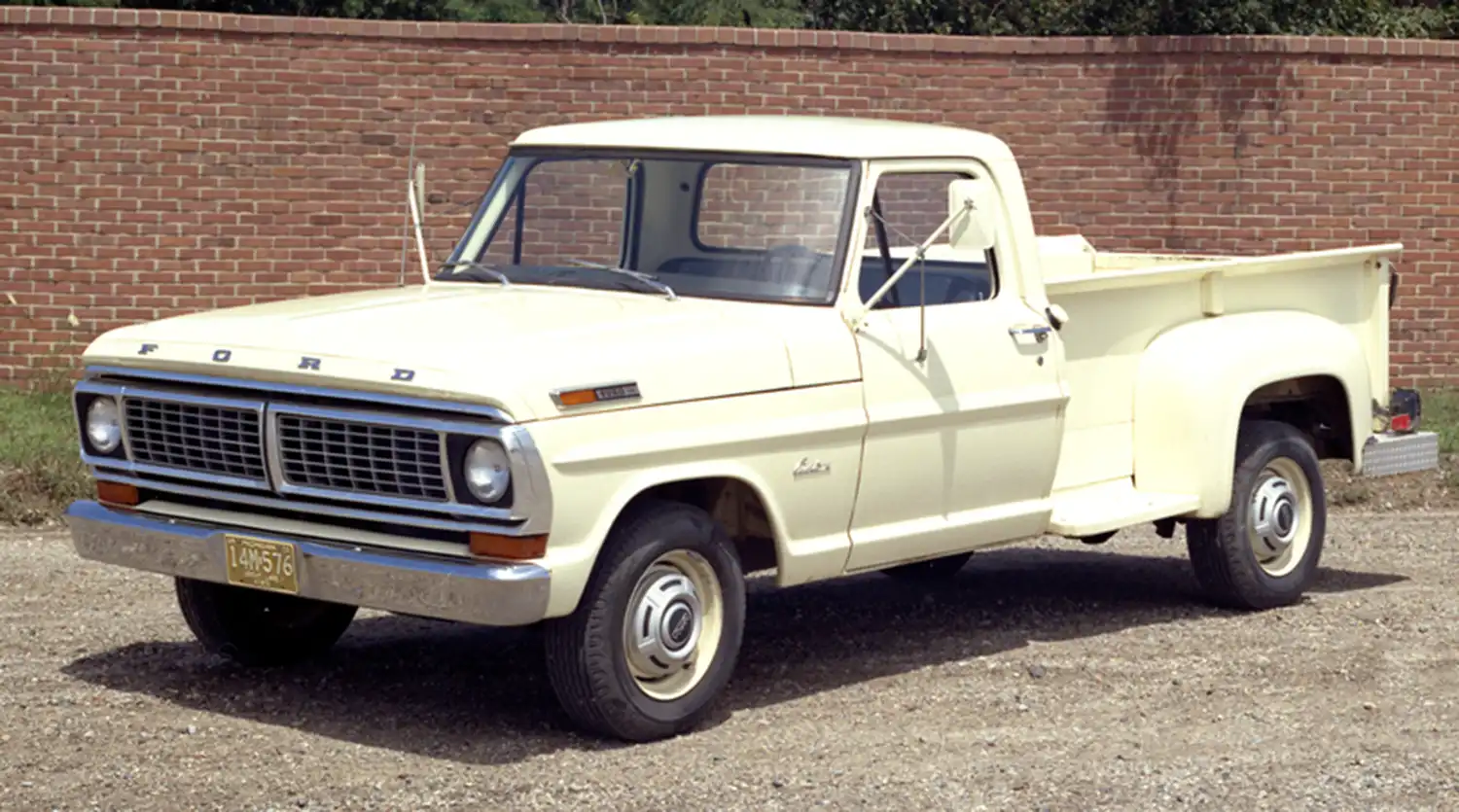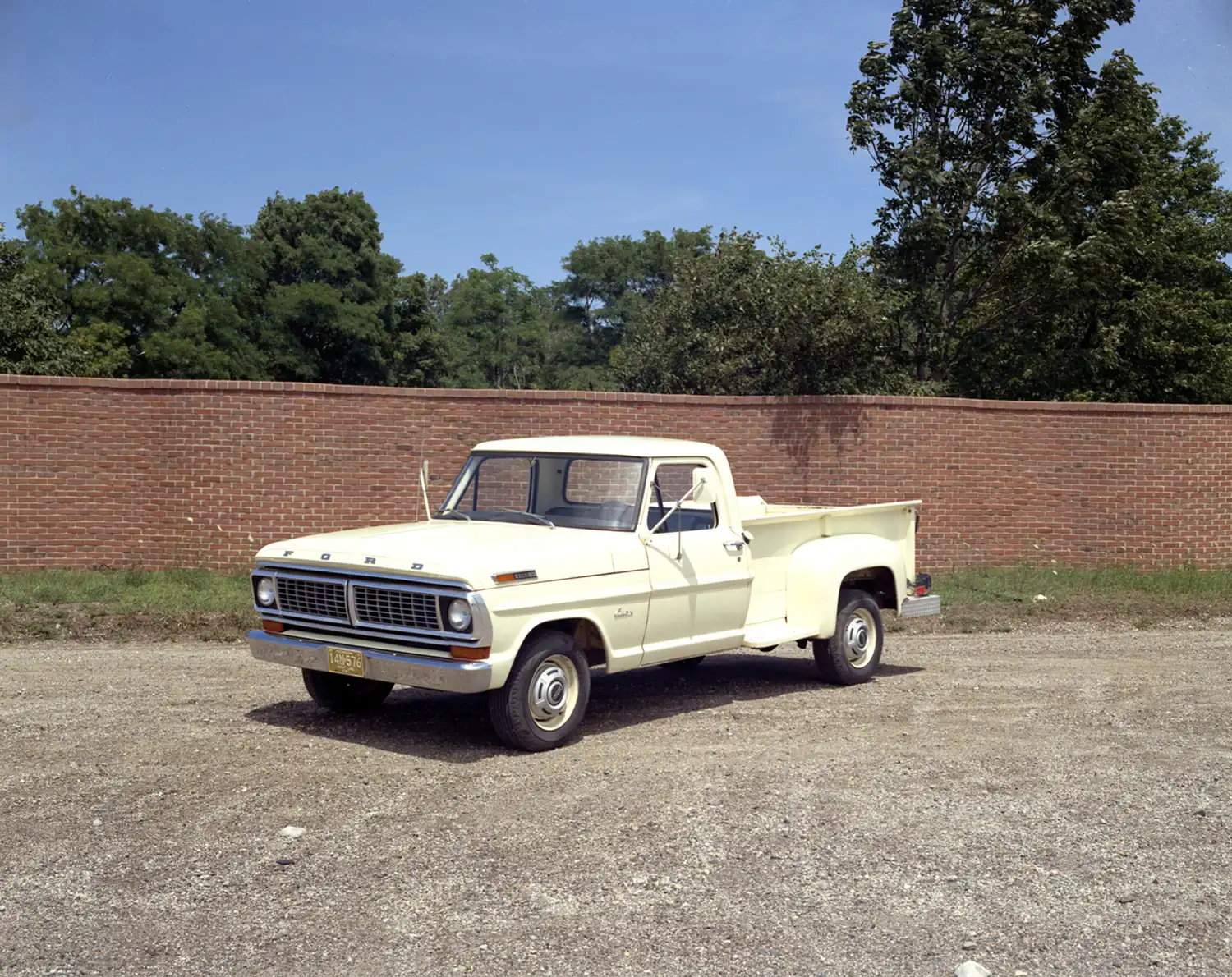
The 1970 Ford F-250 Custom Flareside pickup truck is more than just a vehicle; it’s a testament to an era of robust utility and distinctive American design. Part of the fifth generation of Ford F-Series trucks, produced from 1967 to 1972, this particular model year represents a sweet spot in the series’ evolution. The F-Series itself, first introduced in 1948, quickly became a staple for farmers, tradesmen, and families across the nation, evolving from basic workhorses to more comfortable and stylish daily drivers. The fifth generation, often dubbed the “Bumpside” by enthusiasts for its prominent body lines, offered increased dimensions, improved engine options, and a more refined cabin, solidifying Ford’s dominance in the light-duty truck market. The Flareside variant, with its characteristic narrow bed and exposed rear fenders, harkened back to earlier pickup designs, blending classic aesthetics with contemporary engineering.
Design and Aesthetics
The 1970 Ford F-250 Custom Flareside stands out with its unique body style, a nostalgic nod to traditional truck design. Unlike the wider “Styleside” beds, the Flareside features a narrower cargo box with separate, pronounced rear fenders, giving it a distinctive, rugged appearance. This design not only contributes to its classic charm but also made it practical for certain work applications. The “Custom” trim level typically offered enhanced exterior brightwork, including chrome bumpers, grille surrounds, and trim pieces, elevating its visual appeal beyond a basic work truck. Its robust construction and straightforward lines reflect the no-nonsense approach to utility that defined Ford trucks of this period, yet with an undeniable sense of style.
Interior Comfort and Features
Inside the cabin, the 1970 F-250 Custom Flareside prioritized durability and functionality, but with an eye towards improving driver and passenger comfort over previous generations. The “Custom” designation meant buyers could expect more refined upholstery options, often durable vinyl or cloth, and better-appointed dashboards. While not laden with modern luxuries, the interior provided a spacious and uncluttered environment, featuring a clear instrument cluster with essential gauges for speed, fuel, and temperature. Amenities like a heater, ventilation system, and a factory radio were common, making long days on the job or cross-country drives more tolerable. The straightforward design ensured easy maintenance and enduring reliability, qualities highly valued by truck owners.
Chassis and Suspension
Built on a sturdy ladder frame chassis, the 1970 Ford F-250 was engineered for heavy-duty work and impressive hauling capabilities. The F-250, being a 3/4-ton truck, featured a more robust suspension system compared to its F-100 counterpart. Typically, it employed an independent front suspension with coil springs (or twin I-beam for 2WD models) and a solid axle with leaf springs at the rear, providing a balance of ride comfort and load-carrying capacity. This robust setup allowed the F-250 to tackle demanding tasks, from towing trailers to hauling substantial payloads, while maintaining stability and control. The suspension design was a key factor in its reputation for durability and reliability in various working conditions.
Power and Performance
The 1970 Ford F-250 offered a range of dependable engine options, designed for power and longevity. While specific engines varied by market and trim, common choices included stout inline-six and V8 gasoline engines. For an F-250, more potent V8 options were typically available, such as the 360 cubic inch (5.9L) or even the larger 390 cubic inch (6.4L) FE-series V8s. These engines were known for producing considerable torque, essential for pulling heavy loads and navigating challenging terrain. Paired with either a manual transmission (often a 3-speed or 4-speed) or a robust automatic transmission (like the C6), these powertrains delivered reliable performance and the kind of “Built Ford Tough” capability that the F-Series name became synonymous with. The emphasis was on brute strength and endurance, rather than outright speed, ensuring the truck could handle any task thrown its way.
Utility and Versatility
The 1970 Ford F-250 Custom Flareside truly excelled in its utility. The narrow Flareside bed, with its external fenders, was often favored by those who needed to easily access items from the side of the truck bed, or for specific agricultural or industrial applications. Its 3/4-ton classification meant it could handle significantly heavier loads than a half-ton pickup, making it a favorite for construction, farming, and various trades. The robust drivetrain, combined with its durable chassis, ensured that the F-250 could perform reliably under challenging conditions, whether on paved roads or rugged unpaved surfaces. This versatility cemented its place as a workhorse capable of adapting to a wide range of needs.
Legacy and Collectibility
The 1970 Ford F-250 Custom Flareside, like many of its F-Series brethren, holds a significant place in automotive history and remains a popular choice among classic truck enthusiasts and collectors today. Its sturdy construction, straightforward mechanics, and iconic design contribute to its enduring appeal. These trucks are celebrated for their ease of maintenance, readily available parts, and the ability to be customized while still retaining their classic character. The Flareside’s distinctive styling, in particular, makes it a standout at car shows and a sought-after model for those looking for a blend of vintage aesthetics and practical utility. Its legacy is one of reliability, hard work, and a quintessential piece of American automotive culture.
Summary:
- The 1970 Ford F-250 Custom Flareside is part of the fifth generation F-Series (1967-1972).
- Features a distinctive narrow “Flareside” bed with exposed rear fenders.
- Interior prioritized durability, functionality, and improved comfort.
- Built on a sturdy ladder frame chassis with robust suspension for heavy loads.
- Offered powerful V8 engine options like the 360 or 390 cubic inch.
- Known for its utility, versatility, and ability to handle significant payloads.
- Remains a popular classic truck due to its durability, ease of maintenance, and iconic design.
Disclaimer: This article provides general information about the 1970 Ford F-250 Custom Flareside and is for educational purposes only. Specific vehicle conditions can vary widely.
Source: Ford Heritage Vault
AI Assistance: Gemini
